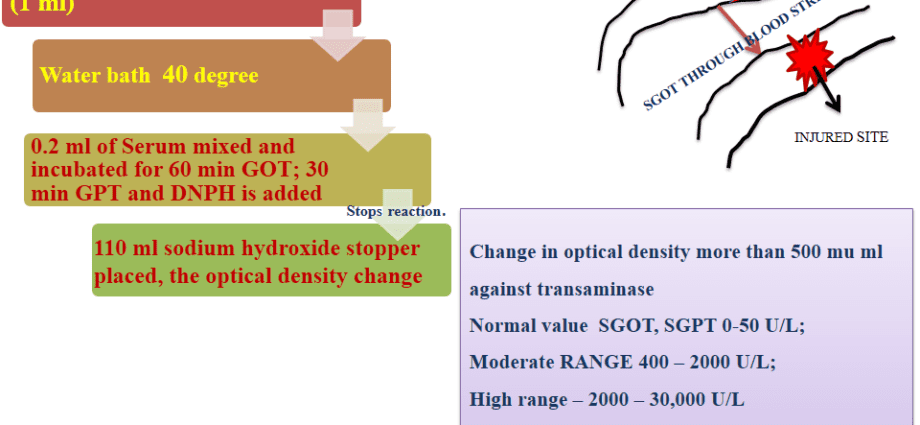Contents
Determination of transaminases in the blood
Definition of transaminases
The transaminases are e present inside cell, especially in the liver and muscles. They are involved in a multitude of biological reactions.
There are two types of transaminases:
- the ASAT (aspartate aminotransferases), mainly found in the liver, muscles, heart, kidneys, brain and pancreas
- the ALT (alanine aminotransferases), relatively specific to the liver
ASATs were formerly designated by the acronym TGO (or SGOT for serum-glutamyl-oxaloacetate-transferase); ALATs under the acronym TGP (or SGPT for serum-glutamyl-pyruvate-transaminase).
Why do a transaminase assay?
The assay of these enzymes is used to detect a problem with the liver: their increase in the blood is due to an abnormal release by damaged liver cells, for example due to a hepatitis, An alcohol or drug poisoning, etc.
The doctor may therefore prescribe a dosage in case of general symptoms such as fatigue, faintness, nausea, jaundice (jaundice), etc. He may also order this test in people at risk of liver problems:
- risk of hepatitis B or C,
- intravenous drug use,
- obesity,
- diabetes,
- autoimmune diseases,
- or family predisposition to liver disease.
What results can we expect from a transaminase assay?
The dosage is done on a simple blood sample, most often taken at the bend of the elbow. No special conditions are required for this sample (but other assays requested in the same report may require you to be fasting, for example).
The determination of the two transaminases will be carried out simultaneously, and the ASAT / ALAT ratio will be calculated, as it gives indications on the type of lesion or liver disease involved.
In the event of abnormal results, a second test will probably be requested to confirm the values.
What results can we expect from a transaminase assay?
When the concentrations of ASAT and especially ALT are abnormally high, this is usually a sign of liver damage.
However, some disorders, such as hepatitis caused by methotrexate or chronic hepatitis C, may not be accompanied by any increase in transaminase levels.
The degree of elevation of transaminases usually gives the doctor good indications as to the diagnosis:
- A slight rise (less than 2 to 3 times the norm) to moderate (3 to 10 times the norm) seen in alcohol-related liver disorder, chronic viral hepatitis, or steatosis (accumulation of fat in cells liver), for example. On the other hand, an ASAT / ALAT ratio> 2 is more suggestive of alcoholic liver disease.
- A higher elevation (greater than 10 to 20 times the norm) corresponds rather to acute viral hepatitis (the rise can be very significant within 4 to 6 weeks following contamination), to lesions induced by drugs or intoxication, as well as ” hepatic ischemia (partial stop of the blood supply to the liver).
The doctor may order other tests or tests to confirm the diagnosis (such as a liver biopsy, for example). The treatment initiated will of course depend on the disease in question.
Read also : All about the different forms of hepatitis Our fact sheet on diabetes |










